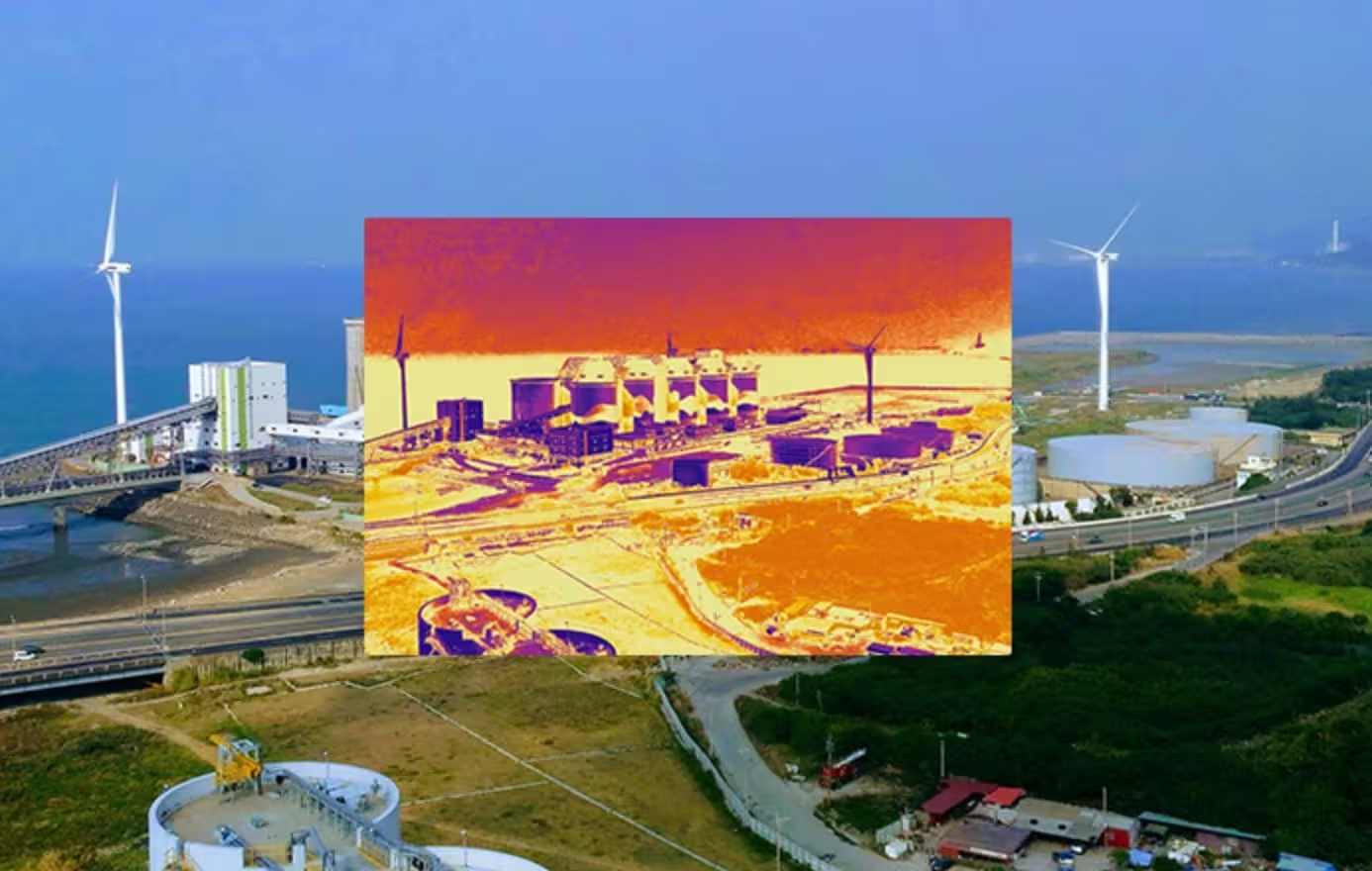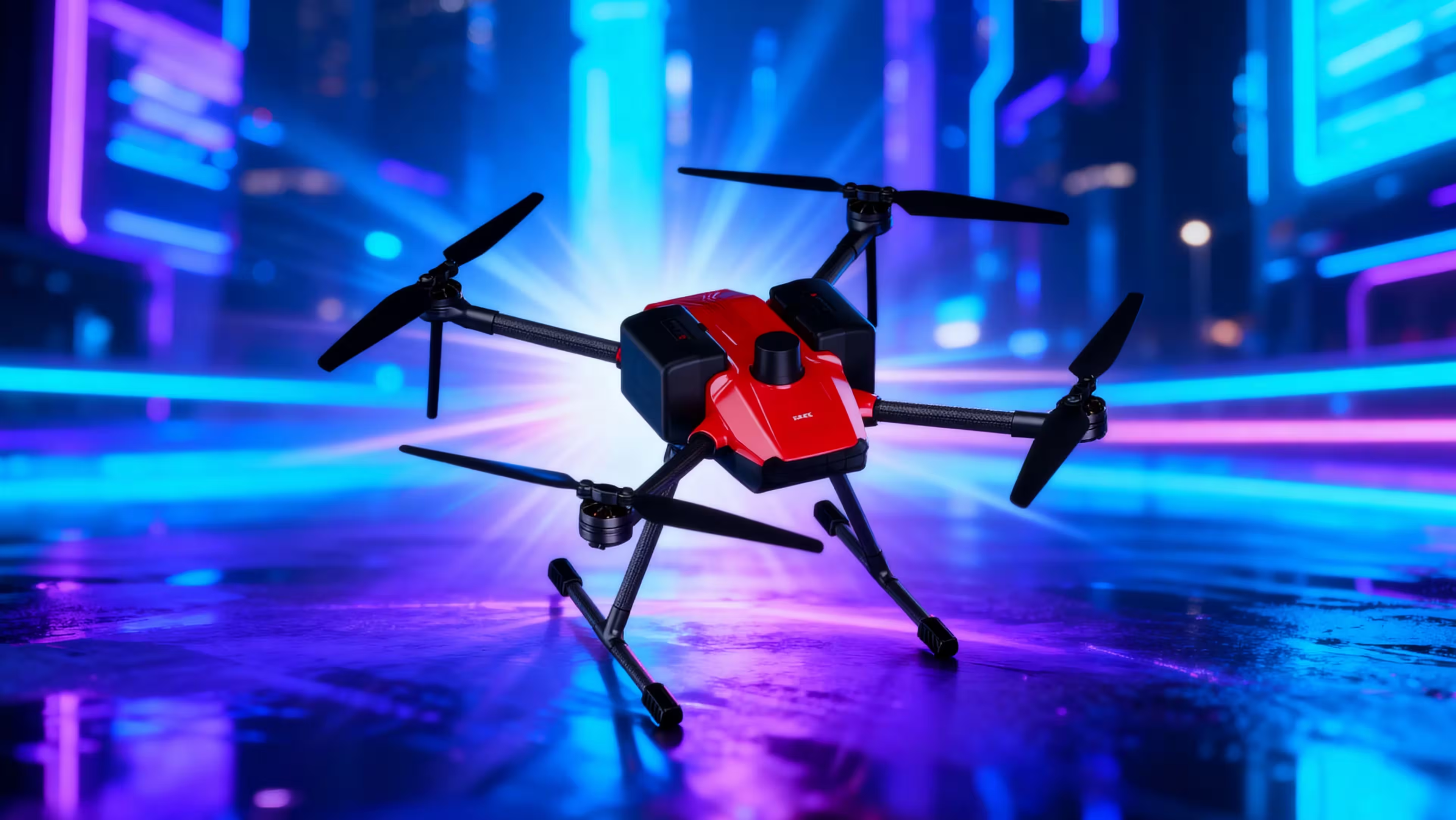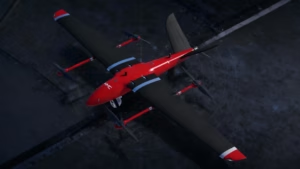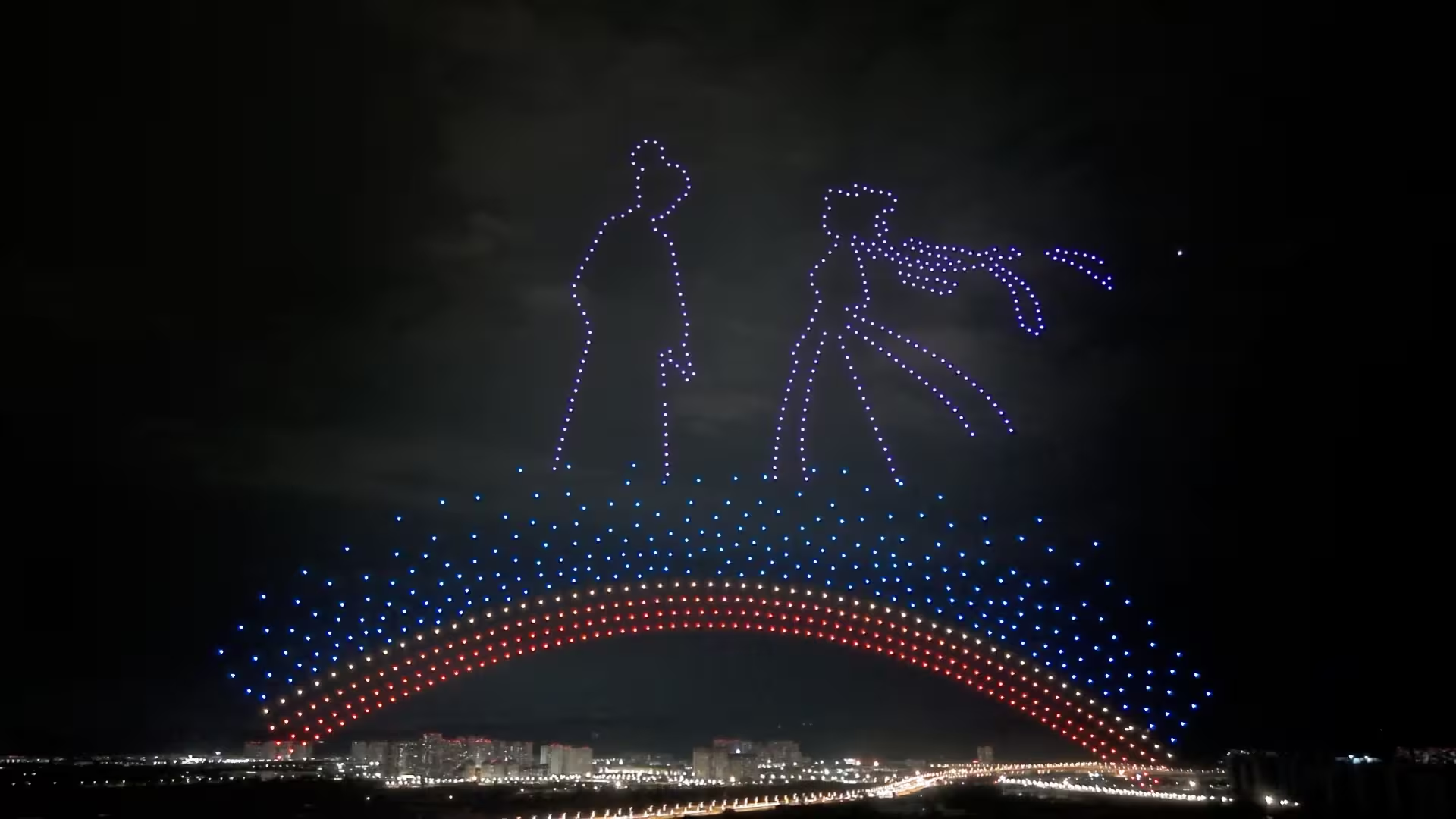Drones are revolutionizing environmental monitoring in industrial zones, enabling precise detection of gas leaks, emissions, and air quality issues. Used by environmental agencies to monitor factories, refineries, and pipelines, these unmanned aerial vehicles (UAVs) tackle challenges like hazardous environments and vast coverage areas. To effectively perform gas detection in industrial settings, drones must meet specific performance standards. Drawing from global environmental guidelines (e.g., EPA’s OOOO standards) and industry practices, this article explores the essential capabilities drones need for gas detection, ensuring accurate and safe operations.
Why Drones for Industrial Gas Detection?
Industrial zones, such as chemical plants or oil refineries, emit gases like methane (CH4), carbon dioxide (CO2), or sulfur dioxide (SO2), which can harm the environment or pose safety risks. Traditional monitoring methods, like ground sensors or manual inspections, are slow and limited in scope. Drones offer:
- Broad Coverage: Quickly scan large industrial sites or pipelines.
- Real-Time Data: Detect leaks instantly for rapid response.
- Safety: Reduce human exposure to hazardous gases or areas.
- Efficiency: Lower costs compared to manned aircraft or extensive ground teams.
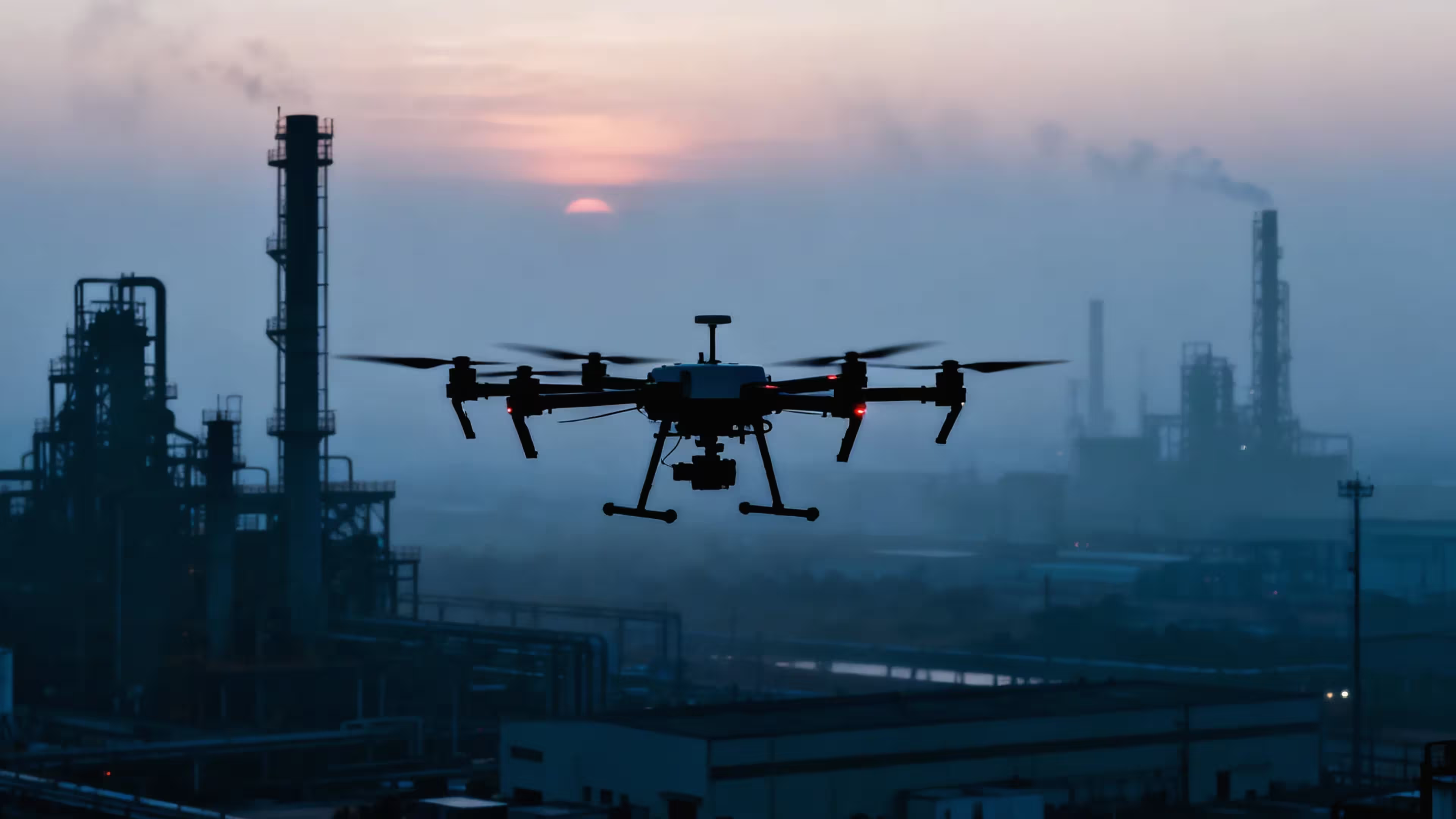
Applications include tracking fugitive emissions, identifying pipeline leaks, and assessing air quality. To succeed, drones must be equipped for the unique demands of industrial environments.
1. Resilience in Harsh Industrial Conditions
Industrial zones feature high humidity, dust, corrosive gases, and extreme temperatures. Drones need:
- Water and Corrosion Resistance: An IP45-IP54 rating to withstand rain, dust, and corrosive gases like SO2 or NOx. Airframes made of aluminum alloy or composites ensure durability.
- Wind Resistance: Operation in winds up to Level 5-7 (10-25 m/s or 22-56 mph) for stability in turbulent industrial airflows.
- Temperature Tolerance: Functioning from -10°C to 60°C to handle hot factory environments or cold outdoor conditions.
For instance, drones deployed in refineries often operate in humid, corrosive settings, requiring robust designs to maintain reliability.
2. Long-Range and High-Endurance Flight
Industrial sites, such as sprawling factories or pipeline networks, demand extensive coverage:
- Flight Endurance: 4-8 hours to monitor large areas (50-150 km) without frequent recharging.
- Range and Altitude: A range of 50-150 km and altitudes up to 500 m (with ±6 cm vertical accuracy) for comprehensive surveys. Payload capacity of 2-5 kg supports heavy sensors.
- Speed: Maximum speeds of 16-30 m/s (36-67 mph) and ascent speeds around 10 m/s for quick positioning over leak sites.
- Autonomous Flight: Beyond Visual Line of Sight (BVLOS) with electronic fences to avoid collisions with infrastructure, plus automatic return-to-home for safety.
These capabilities allow drones to cover vast industrial complexes efficiently, as seen in pipeline monitoring operations.
3. Advanced Sensors for Gas Detection
Precise gas detection requires specialized sensors to identify and quantify emissions:
- Gas Sensors: Tunable Diode Laser Absorption Spectroscopy (TDLAS), Optical Gas Imaging (OGI), or LIDAR systems to detect gases like CH4, CO2, NOx, or SO2 with sensitivity of 10-500 ppm×m at 30-100 m distances.
- Multispectral/NIR Imaging: Cameras with ≥640×512 pixel resolution to identify gas plumes or vegetation stress caused by leaks.
- Particulate Monitoring: Sensors for PM2.5 or other pollutants to assess air quality.
- AI Recognition: Onboard AI to automatically detect and classify gas leaks, reducing manual analysis.
These sensors enable drones to pinpoint emission sources, such as a methane leak in a refinery, with high accuracy.
4. Reliable Communication and Data Processing
Gas detection drones must transmit data securely to environmental authorities:
- Communication Range: WIFI, 4G/5G, or satellite links supporting 500 m to 150 km for real-time video and sensor data.
- Data Processing: Edge AI for instant leak detection and cloud platforms for mapping and storage, often integrated with Geographic Information Systems (GIS) for precise location tracking.
- Secure Transmission: End-to-end encryption to protect sensitive environmental data from interference.
Real-time data is critical for alerting authorities to hazardous leaks, enabling swift mitigation.
5. Safety and System Integration
Industrial zones pose risks like explosive gases or complex infrastructure, requiring robust safety features:
- Redundancy Systems: Dual sensors and three-propeller safe descent mechanisms to prevent crashes during failures.
- Emergency Protocols: A seven-level response system, including fault detection, weather pauses, and manual takeover, ensures safe operations.
- System Integration: Compatibility with environmental monitoring platforms for multi-drone coordination and low-altitude path planning around factory structures.
- Autonomy: Swarm capabilities and automated navigation reduce operator workload.
These features ensure drones operate safely in high-risk areas, such as chemical plants.
6. Regulatory Compliance
Drones must adhere to environmental and aviation regulations:
- Certifications: Compliance with EPA, EASA, or equivalent standards, including BVLOS permits for industrial operations.
- Data Privacy: Adherence to GDPR or similar regulations to protect environmental data, especially for public reporting.
- Operational Permits: Coordination with aviation authorities to ensure legal flights in industrial airspace.
Compliance ensures accurate, ethical reporting of emissions data for regulatory purposes.
Real-World Impact
These requirements enable drones to excel in diverse scenarios:
- Emission Monitoring: A drone with TDLAS sensors can detect methane leaks across a refinery, mapping sources for repair.
- Air Quality Assessment: PM2.5 sensors track pollution levels in industrial zones, aiding environmental compliance.
- Pipeline Surveillance: Drones with 8-hour endurance monitor 150 km of pipelines, identifying leaks in real time.
Why These Requirements Matter
Drones with these capabilities deliver:
- Precision: Accurately detect and quantify gas emissions.
- Coverage: Efficiently monitor large industrial sites.
- Safety: Protect workers and equipment in hazardous areas.
- Compliance: Meet regulatory standards for environmental reporting.
As drone technology evolves, expect advancements in sensor sensitivity, AI analytics, and flight endurance, further enhancing their role in environmental protection. Drones are becoming indispensable tools for cleaner, safer industrial operations.
